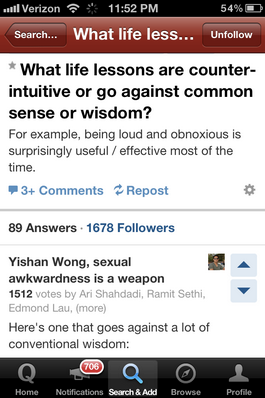
This week, fans packed stadiums in London wearing their nation’s colors like rebels ready for battle in Mel Gibson’s army. They screamed with excitement and anguished in defeat. Many paid thousands of dollars to travel around the globe to be there.
Among those who did not attend, 90% of people with access to a television tuned-in during past Olympics. In 2008, that was 2 out of every 3 people on the planet.
What the hell is going on here? How do sports engage, delight, and motivate people to put their lives on hold and become totally engrossed in watching other people play games? If sports can motivate people to go to great lengths, can businesses learn to instill the same loyalty and passion in their customers?
In fact, the psychology of sports that makes fans do crazy things in the name of their team can be harnessed to turn people into avid users. Innovative companies are minting habitual customers by understanding the mechanics of human behavior. Here are a few examples of the psychology of sports and the companies who have learned to exploit these same principles:
This Might Be the Year”
For a stunning example of customer loyalty, look no further than the fans of the heartbreaking Chicago Cubs. The team suffers from “the longest drought in North American sports,” 104 years without a World Series win. Yet, despite the century of defeat, Forbes magazine rated the team as having the 4th most loyal fans in baseball.
Why do Cubs fans keep coming back? What keeps them engaged year after losing year? Though sports columnists and diehards provide detailed bullet-points intellectualizing why “this is our year”, the answer lies in two cognitive hacks, which at times produce seemingly irrational behavior – hope and variable rewards.
From then-candidate Barak Obama’s iconic campaign poster to Pepsi’s recent campaign ad, it’s clear that hope sells. According to BJ Fogg of Stanford University’s Persuasive Technology Lab, the pursuit of hope is a key motivator of human behavior.
While every sports fan appreciates the power of hope, few comprehend the zombie-like power variable rewards can have on the brain. A classic behavioral mechanic deployed by slot machines and video games, random reinforcement kicks the brain’s dopamine system into high-gear. We’re mesmerized by the prospect of another chance to find a reward, a win, a prize – an endless search for the satisfaction that is never fully realized.

Like a Cubs fan holding on to the elusive promise of a championship victory for just one more year, Sean can’t help but check his Quora feed searching for that enticing answer just another swipe away. “I never know what type of questions I’ll get,” Markey said. “Will there be a question that could drastically change my worldview? I don’t know, but if I don’t check, I’ll never know. So I find myself going back several times a day.”
The More You Pay, The Better the Game
Jay Acunzo is also hooked, not to Quora but to his favorite sports team, the New York Knicks. Come what may, the 26 year-old says he will remain a fan. Last year, he spent several hundred dollars in tickets along with hundreds more for gear and related paraphernalia.
But for Xandra Kredlow, Acunzo’s girlfriend of over 3 years, the Knicks are just a money-sucking distraction. Xandra couldn’t care less about assists or rebounds. She’ll attend a game from time to time, but if she is like the women in a recent study, she does so to spend time with a loved one, not follow the action on the court. But what explains how differently people feel about sports?
Two more psychological phenomenon help explain why some people engross themselves in fandom while others do not. The first aspect of this cognitive cocktail is known as an escalation of commitment bias. Research reveals that the more effort people expend in doing a behavior or acquiring a set of beliefs, the more likely they are to continue doing the behavior or holding on to their point of view.
In sports, the effort comes early in life. Children quickly go from playing backyard games to wanting to be like their favorite sports heroes. Every practice is a bit of work, increasing the love of the game. While very few children grow up to play sports professionally, they continue to associate with the joy they felt playing the games of their youth. As fans age, they begin to invest in the game not with physical effort, but with their leisure time and disposable income. And there is reason to believe that the more fans spend, the more they love their team.
Cognitive Dissonance Theory may provide an answer to how fans’ enthusiasm rises with the degree of effort expended. If fans perceive that they are paying more to watch the team than the enjoyment received, a mental conflict ensues. The only way to resolve this discrepancy is to love the team enough to justify the costs.
From Doing to Being
Escalation of commitment explains part of the reason why we get hooked to sports, but there is another attribute, which helps mint lifelong loyalists. Sports shape our self-identity. Research suggests that the way we wish to perceive ourselves has a profound impact on how we behave. For example, people who took a survey on “being a voter” were much more likely to actually vote than people who took the same survey about “voting.” The simple switch in the survey, from a verb defining an action (voting), to a noun defining the self, (voter), dramatically increased turnout.
When people change the way they define themselves, they begin to behave in ways consistent with that belief. A real fan dresses in team colors. A real fan watches every game. A real fan is loyal to the end.
Of course, people perceive what it means to be a fan differently, which explains why everyone doesn’t show up to the office wearing team jerseys and face paint. However, the way we define who we are has a measurable impact on how we act, from the sports we watch to the products and services we use. Several companies utilize the phenomenon of escalations of commitment and self-image shaping to drive customer engagement.
Apple brilliantly defined what it means to be a fan of it’s products, first with their “Think Different” campaign and later within the famous “Get a Mac” commercials. Apple coupled itself with being young and innovative, while defining its competition, the PC, as the opposite. By manifesting its products as real people — “I’m a Mac. I’m a PC.” — it made the metaphor crystal clear. Apple also uses escalations of commitment, starting with the entry level iPod, in an attempt to eventually take over every possible screen, from phone to TV.
Another company, StackExchange, provides a surprising example of using escalations of commitment and shaping of self-image to create super users. The site, which started as a forum for answering technical questions, is almost completely run by its members and now hosts vibrant forums on hundreds of topics. On average, visitors post 5,600 questions to the site every day. How does StackExchange bring order to the flood of questions and ensure people get answers quickly? Simple, it makes its users do the work.
Each question asked, answered, and promoted, further commits the user to the system. A task as easy as a one-click up-vote, signifying satisfaction with an answer, can evolve into complex and time-consuming jobs. At other companies, this kind of work would be completed by paid staff. But at StackExchange, top users spend several hours per day managing content and moderating the community, all without receiving a dime.
According to Jeff Atwood, co-founder of StackExchange, “Our most active members see themselves as more than just users. They view themselves as owners.” Atwood continues, “When users view themselves as responsible for the quality of the site, their usage explodes.” It is here that StackExchange begins to change users’ self-image. These users turned owners, see themselves as having a special responsibility to the site just as sports fans are convinced their loyalty matters to the team. Their participation becomes part of who they are, not just what they do.
Sports are Weird
Wherever we observe unusual human behavior, it’s often useful to ask “why?” Spectator sports are such a common facet of our lives that we sometime fail to appreciate their ability to make us do highly unusual things — behaviors rarely observed outside the context of organized competition.
Let’s face it, the ritual of dressing in special attire, wearing colors signifying a tribal-like affiliation, and paying top dollar for the right to watch people we’ve never met play a game for our amusement, is quite frankly, weird. But the reasons why we behave the way we do under these peculiar circumstances provide practical lessons for building better products, and perhaps better lives.
Sports are fundamentally human and more importantly, they are fun. Porting some of the same psychological tenets of sports into business is more than just a ploy to make products more engaging, it’s a way to increase customer satisfaction. Sports make people happy. Fans come to watch the games to feel good and even when their teams lose, they leave happy enough to return again for the next game, and the next, and just one more.
Thanks to Max Ogles for reading early versions of this essay.
Related Articles
- Schedule Maker: a Google Sheet to Plan Your Week
- Cancel the New York Times? Good Luck Battling “Dark Patterns”
- How to Start a Career in Behavioral Design
- A Free Course on User Behavior
- User Investment: Make Your Users Do the Work
- Variable Rewards: Want To Hook Users? Drive Them Crazy
- The Hooked Model: How to Manufacture Desire in 4 Steps
